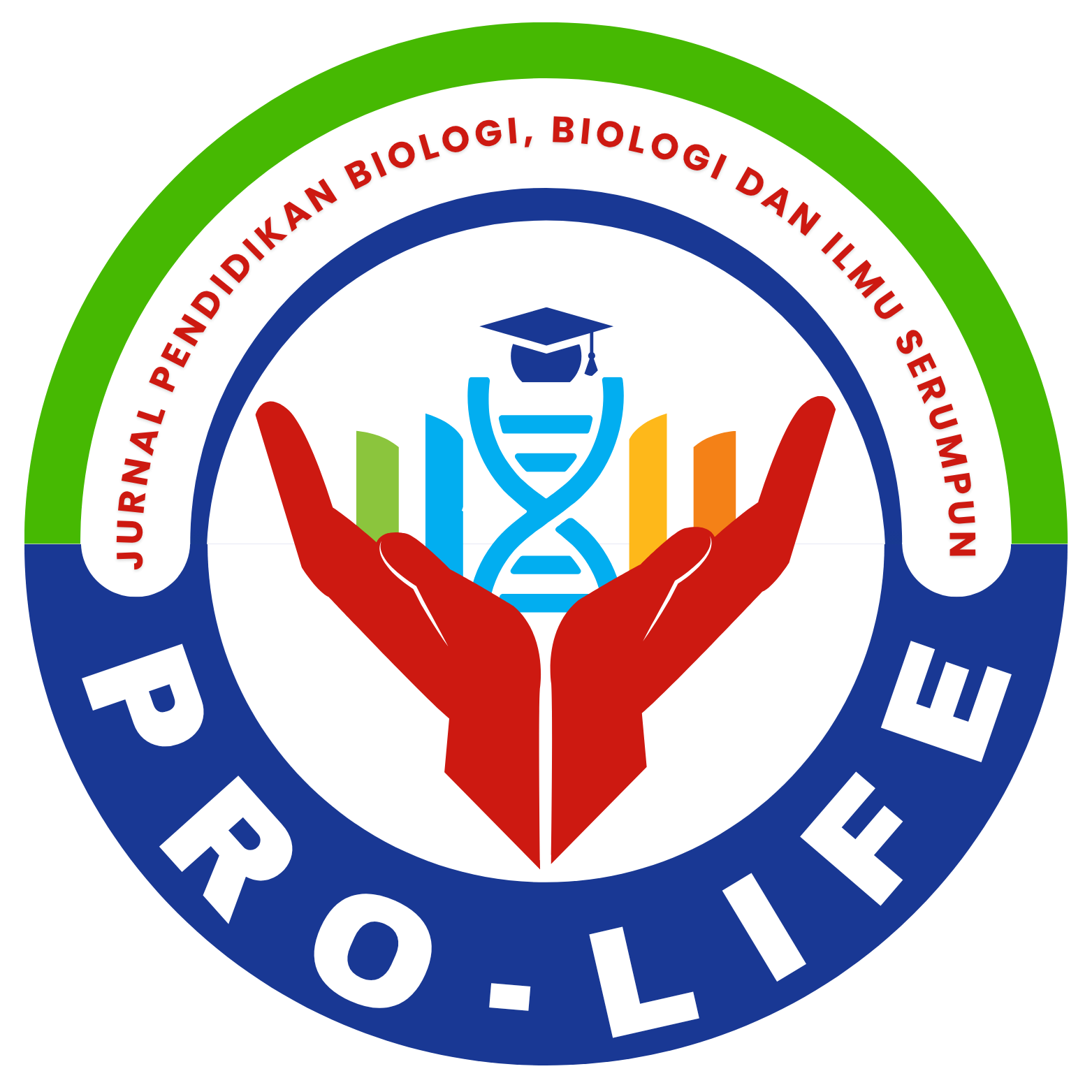Kandungan Minyak Atsiri Andaliman (Zanthoxylum acanthopodium DC) dan Bioaktivitasnya
DOI:
https://doi.org/10.33541/pro-life.v8i1.2780Keywords:
Zanthoxylum acanthopodium, essential oil, anti-microbialAbstract
Andaliman (Zanthoxylum acanthopodium) is a species belonging Rutaceae, widely used as a spice and traditional medicine, especially by the Batak ethnic group in North Sumatra. Until now, in-depth studies on the botanical and utilization of Z. acanthopodium is limited. This study is based on literature studies on various research results published online, especially on Google scholars. Some of the keys used include: Z. acanthopodium, uses of Z. acanthopodium, essential oil of Z. acanthopodium and bioactivities of Z. acanthopodium. The ethnobotany studies of Z. acanthopodium have been used in meat and fish processing which results in a distinctive flavor and longer lasting food. In the traditional Z. acanthopodium use as mouth fresheners, dental care, treat asthma, cure rheumatism, cure coughs, ingredients for making health drinks. The Z. acanthopodium has anti-cancer and anti-microbial bioactivity associated with its essential oil. The compound of dictammine and skimmianine have anticancer activity against leukemia P-388 murine cells. The activity of Z. acanthopodium as an anti-microbial is very potential to be developed as a food preservative while preventing cancer.
References
Devi OZ, KS Rao1, A Bidalia, R Wangkheirakpam and OM Singh. 2015. GC-MS analysis of phytocomponents and antifungal activities of Zanthoxylum acanthopodium DC. collected from Manipur, India. European Journal of Medicinal Plants 10(1): 1-9.
Kristanty RE and J Suriawati. 2014a. Cytotoxic and antioxidant activity of petroleum extract of andaliman fruits (Zanthoxylum acanthopodium DC). International J. Pharm.Tech. Res. 6(3): 1064–1069.
Kristanty RE and J Suriawati. 2014b. Cytotoxic and Antioxidant activity of petroleum extract of andaliman fruits (Zanthoxylum acanthopodium DC.). International Journal of Pharm Tech Research 6(3): 1064-1069
Kwan YP, T Saito, B Ibrahim, FMS Al- Hassan, CE Oon, Y Chen, SL Jothy, JR Kanwar and S Sasidharan. 2016. Evaluation of the cytotoxicity, cell- cycle arrest, and apoptotic induction by Euphorbia hirta in MCF-7 breast cancer cells. Pharm Biol 54(7): 122-1236.
Lumban Raja RN and A Hartana. 2017. Variasi morfologi andaliman (Zanthoxylum acanthopodium) di Sumatra Utara. Floribunda 5(7): 258-266.
Majumder M, HK Sharma, K Zaman and W Lyngdoh. 2014. Evaluation of physico-chemical properties and antibacterial activity of the essential oil obtained from the fruits of Zanthoxyllum acanthopodium DC. collected from Meghalaya, India. International Journal of Pharmacy and Pharmaceutical Sciences 6(5): 1-
Negi JS, VK Bisht, AK Bhandari, P Singh and RC Sundriyal. 2011. Chemical constituents and biological activities of the genus Zanthoxylum: A review. African Journal of Pure and Applied Chemistry 5(12): 412-416.
Parhusip AJN, BSL Jenie, WP Rahayu and S Yasni. 2005. Pengaruh ekstrak andaliman (Zanthoxylum acanthopodium DC) terhadap permiabilitas dan hidrofobisitas Bacillus careus. Jurnal Teknol dan Industri Pangan 16(1).
Rakić T, J Šinžar-Sekulić, B Filipović, V Tadić, B Stevanović, and K Tan. 2009. Ecophysiological and anatomical characteristics of the subtropical shrub Zanthoxylum Acanthopodium (Rutaceae) in conditions of a temperate continental climate (Serbia). Arch. Biol. Sci. 61(2): 249-260.
Rana VS and MA Blazquez. 2008. Terpenoid constituents of Zanthoxylum acanthopodium DC. Leaves 20: 215-216
Sangwan NS, AHA Farooqi, F Shabih and RS Sangwan. 2001. Regulation of essential oil production in plants. Plant Growth Regulation 34: 3-21.
Satria D, J Silalahi, G Haro, S Ilyas and PAZ Hasibuan, 2019. Chemical analysis and cytotoxic activity of nhexane fraction of Zanthoxylum acanthopodium DC. fruits. Rasayan J. Chem. 12(2): 803-808.
Sibero MT, Siswanto AP, Frederick EH, Wijaya AP, Syafitri E, Farabi K, Murwani R, Saito S, Igaras Y. 2020. Antibacterial, cytotoxicity and metabolite profiling of crude methanolic extract from andaliman (Zanthoxylum acanthopodium) fruit. Biodiversitas 21: 4147-4154.
Silalahi M, EC Purba EC and W Mustaqim. 2019. Tumbuhan Obat Sumatera Utara Jilid II. Dikotiledonae. UKI Press. Jakarta
Silalahi M, Nisyawati, EB Walujo and J Supriatna. 2015a. Local knowledge of medicinal plants in sub-ethnic Batak Simalungun of North Sumatra, Indonesia. Biodiversitas 16(1): 44-54. Silalahi M, Nisyawati, EB Walujo, J Supriatna and W Mangunwardoyo.
2015b. The local knowledge of medicinal plants trader and diversity of medicinal plants in the Kabanjahe traditional market, North Sumatra, Indonesia. Journal of Ethnopharmacology 175: 432-443.
Silalahi M, Nisyawati, EB Walujo, W Mustaqim. 2018. Etnomedisin tumbuhan obat oleh subetnis Batak Phakpak di Desa Surung Mersada, Kabupaten Phakpak Bharat, Sumatera Utara. Jurnal Ilmu Dasar 19(2): 77- 92.
Siregar BL, LAM Siregar, TC Nisa and LAP Putri. 2019. Flower morphology and inflorescence of andaliman (Zanthoxylum acanthopodium DC.) from Dairi, North Sumatera. IOP Conf. Series: Earth andEnvironmental Science 260 (2019) 012178 doi:10.1088/1755-1315/260/1/012178 : 1-8
Sitanggang FMC, AS Duniaji and IDPK Pratiwi. 2019. Daya hambat ekstrak buah andaliman (Zanthoxylum acanthopodium DC) dalam etil asetat terhadap pertumbuhan Escherichia coli. Jurnal Ilmu dan Teknologi Pangan 8(3): 257-266.
Taiz L and E Zeiger. 2010. Plant Physiology. 5th Edition, Sinauer Associates Inc., Sunderland, 782 p
Tjahjandarie TS, ANI Gunawan, RD Saputri and M Tanjung. 2019. Senyawa alkaloid furokuinolin dari kulit batang Zanthoxylum acanthopodium DC. J. Sains Kes. 2(2): 89-92.
Wijaya CH, IT Hadiprodjo and A Apriyantono. 2002. Identification of volatile compound and key arome compounds of andaliman fruit (Zanthoxylum acanthopodium DC.). Food Sci. 11(6): 680-683.
Downloads
Published
How to Cite
Issue
Section
License
Copyright (c) 2021 Marina Silalahi, Karen Lumbantobing

This work is licensed under a Creative Commons Attribution-ShareAlike 4.0 International License.















.svg_.png)





